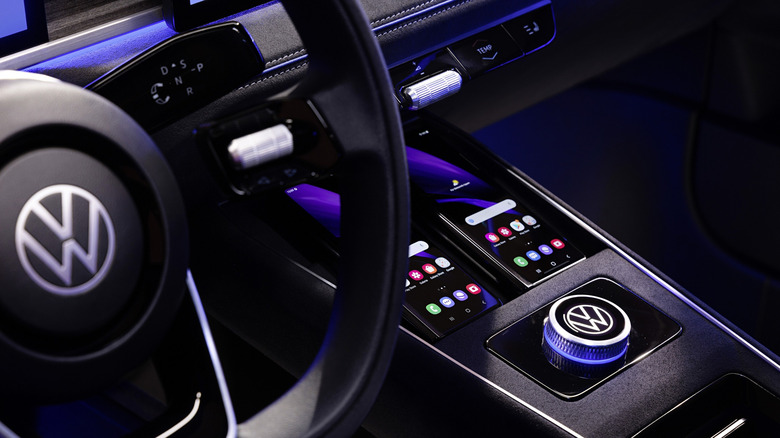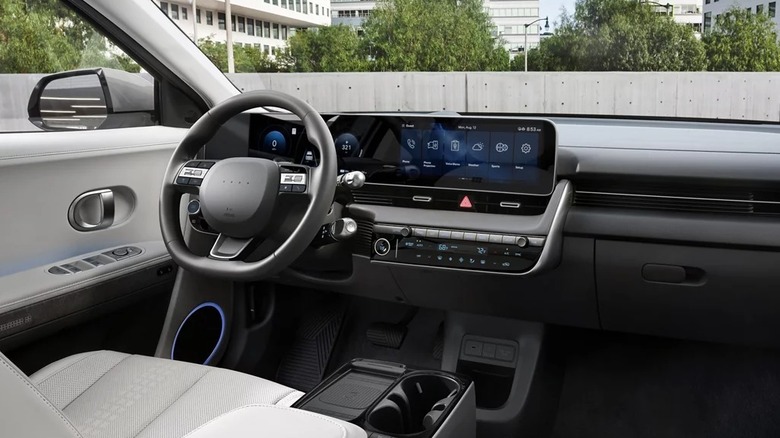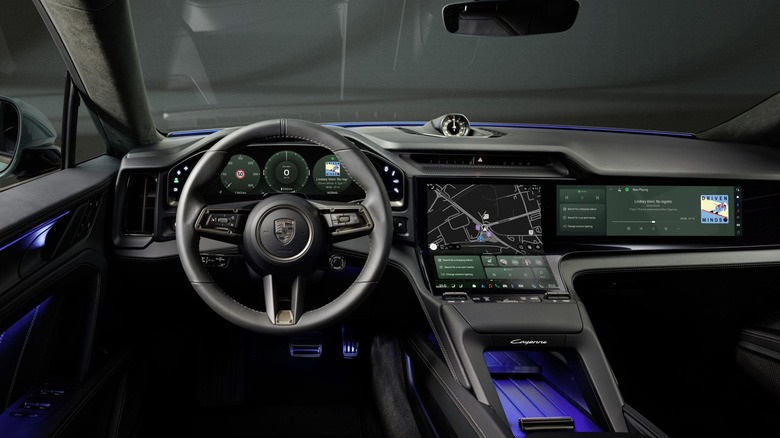These Major Automakers Are Ditching Touch Screen Dashboards And Going Back To Basics
The past decade has witnessed an increasing number of carmakers ditching physical buttons on car dashboards, replacing them with large touchscreen controls. While these looked and felt cool, it wouldn't take users long to realize that these weren't great in terms of user friendliness or safety. The problem with putting everything inside a touchscreen is that simple one-click commands become needlessly complicated. On older cars, something seemingly as simple as controlling the fan speed involved an intuitive flick of a very tactile, physical rotary dial. These simple solutions were discarded in favor of fancy-looking on-screen slider controls. If that wasn't all, in the rush to cram everything onto a giant touchscreen — often under the guise of minimalism and modernity — carmakers even ignored obvious safety concerns. Most of these concerns stem directly from the likelihood that drivers will have to take their eyes off the road in order to navigate menu options and change a setting.
It is also becoming clear that minimalism and design weren't the only driving forces behind forcing people to put up with giant touchscreens inside cars. Their sheer prevalence means touchscreens are cheaper to produce and update than complex button arrays, giving manufacturers an added financial incentive to opt for all-screen designs. We've talked about how adding more screens and removing buttons has adversely impacted safety. And just when everyone thought there was no going back to the good old days of physical buttons, there is a sliver of hope. Several legacy automakers, including Volkswagen, Mercedes-Benz, and Hyundai, are reversing course. They're rediscovering the value of buttons, knobs, and tactile feedback — the very elements that once made driving simpler, safer, and far more human.
The return of the buttons: Carmakers that are leading the charge
Among the first carmakers to commit to bringing back tactile buttons to dashboards is Volkswagen. The company will start using buttons to control essential, frequently used functions, such as volume control, climate (including fan and heating), and hazard lights. The company's new concept electric car, the Volkswagen ID.2all, first showcased in early 2023, was one of the first new cars from the company to feature physical buttons for these controls. Another concept vehicle from the company, the Volkswagen ID.Every1, which is slated for a 2027 launch, is also likely to adopt this change.
Korean carmaker Hyundai is another company that is bringing back physical buttons to its cars. The latest versions of the company's electric cars, the Ioniq 5 and the Kona, now feature more physical buttons compared to older models. In other models, Hyundai is restoring knobs for volume, tuning, and temperature control. Hyundai's sister brand, Kia, is also reportedly joining the physical buttons bandwagon and has already introduced the EV9 with physical buttons.
Volkswagen-owned sports car maker Porsche — perhaps inspired by its parent company — has confirmed that it will continue to use physical toggles to control fan speed and climate adjustment on the Cayenne. Additionally, the Cayenne Electric will also feature a roller knob for volume controls. German luxury carmaker Mercedes-Benz, which is known for its tech-heavy cabins, is also joining the list of companies bringing back physical controls. The company's software chief, Magnus Ostberg, has confirmed that new and existing models — including the GLC and next-gen CLA — will feature steering wheels with rollers, rockers, and buttons instead of purely haptic controls. In fact, Mercedes also has plans to retrofit this steering wheel across current models to improve usability.
Is regulation driving the switch to physical buttons?
As discussed earlier, one of the reasons carmakers went overboard with touchscreen controls everywhere was the significant amount of money they saved by doing away with physical buttons. Most manufacturers making this sudden shift to physical buttons are marketing it as a move based on customer feedback and basic empathy. The real reason behind this sudden change of heart, however, may have more to do with an upcoming regulatory change, rather than just consumer interest.
Starting in 2026, carmakers that hide basic controls, such as wipers, indicators, or hazard lights, inside a touchscreen menu will stand to lose crucial safety points under NCAP's updated "Human Machine Interface (HMI)" assessment criteria. Euro NCAP is the agency that gives cars their well-known safety ratings. They have decided that drivers shouldn't have to dig through screens just to perform essential actions. To earn a top rating, these features must be operated by physical buttons or stalks, not touch panels. A car with touchscreen-only controls risks losing its all-important 5-star rating.
Given that manufacturers understand that consumers may shy away from purchasing cars with lower safety ratings, they feel it's best to comply with NCAP's requirements, rather than risk consumer backlash. This also, perhaps, explains why most of the carmakers in this list are predominantly European, save for Hyundai and Kia. Whether other carmakers also follow suit in the race to bring back good old physical buttons will be interesting to watch.


